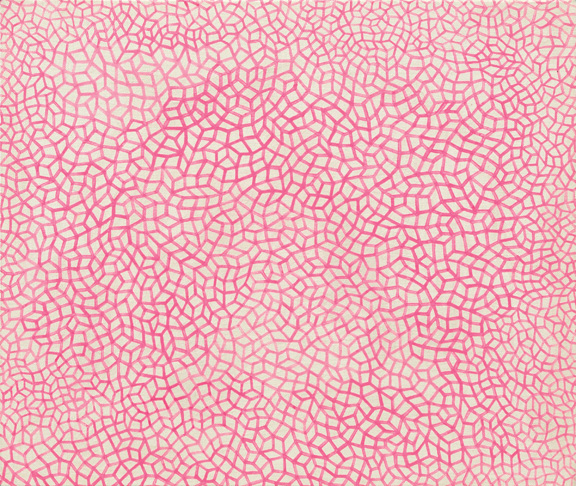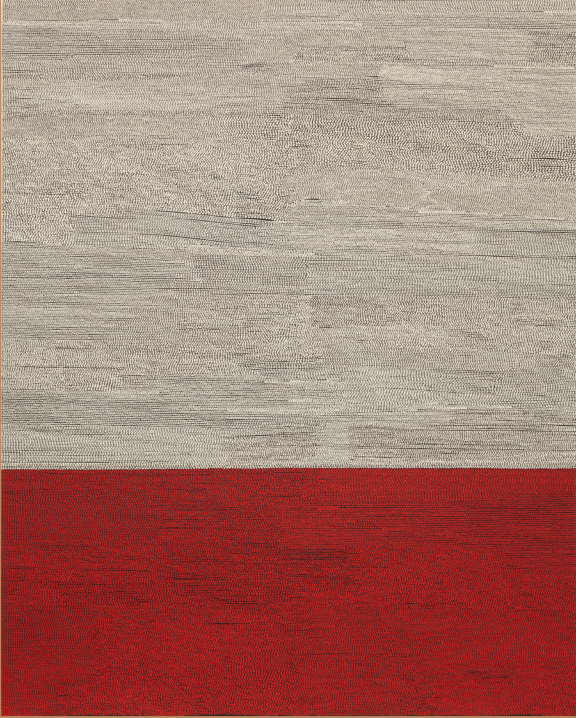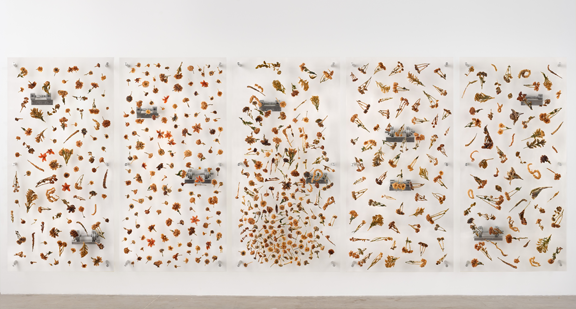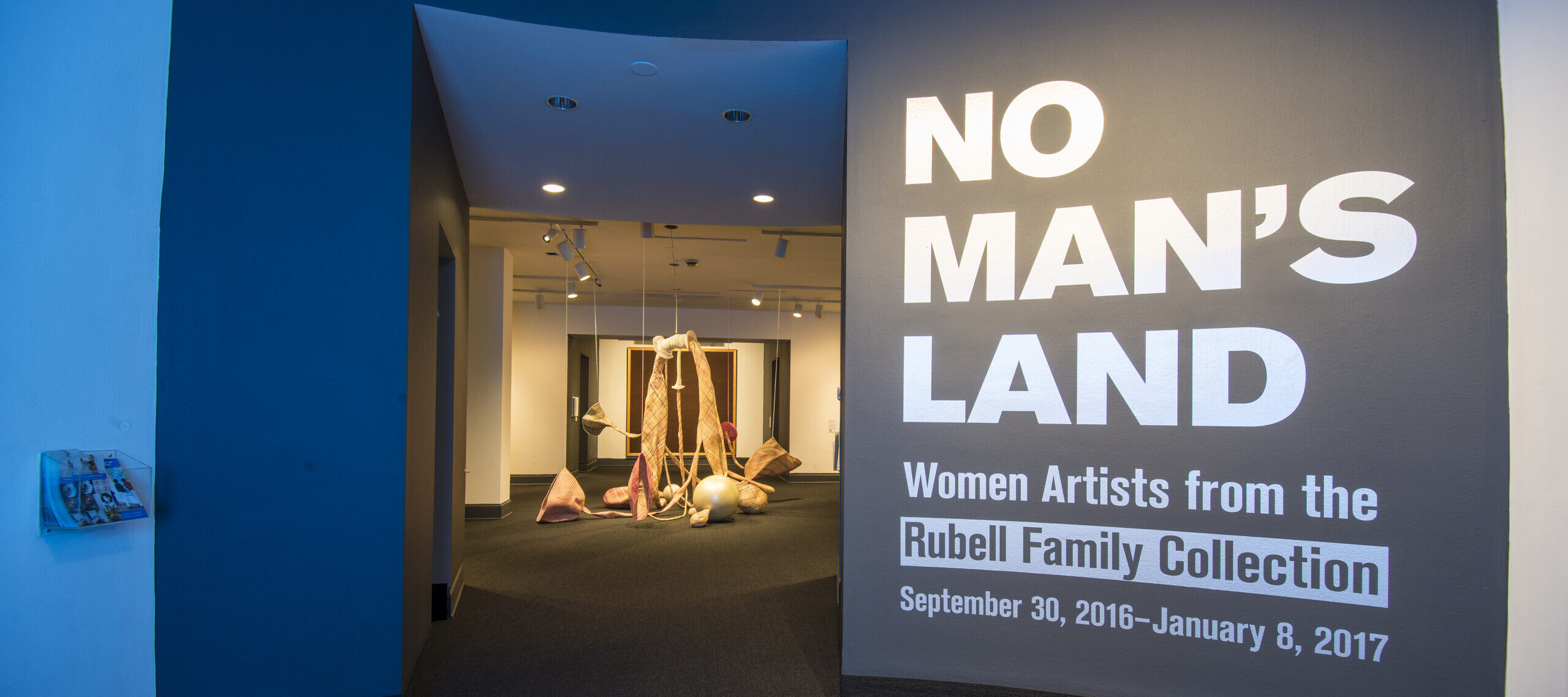Contemporary large-scale paintings and sculptural hybrids are on view in NO MAN’S LAND: Women Artists from the Rubell Family Collection. The exhibition imagines a visual conversation between 37 women artists from 15 countries exploring images of the female body and the physical process of making. Yayoi Kusama, Jennifer Guidi, and Anicka Yi construct contemplative works that invite viewers’ sustained attention.

What’s On View?
Yayoi Kusama’s INFINITY NETS (H10), 2000
“My works are painful and at the same time playful,” says Yayoi Kusama, referring to the intensity and whimsy of her paintings. Since the 1950s, Kusama (b. 1929, Matsumoto, Japan) has created a multitude of hypnotic works that emphasize the negative spaces formed by dots or holes—earning her recognition as the “polka dot queen.” A self-described “obsessional artist,” Kusama is known for compulsively painting nets and dots. The artist, who has lived voluntarily in a psychiatric hospital since 1975, often describes her work as an “expression of my life, particularly of my mental disease.”
Kusama plays with the paradoxical idea that infinity can be captured within the confines of a canvas. INFINITY NETS (H10) comprises a pink lattice of nets against an off-white background. The composition’s web of lines tighten toward the edges of the canvas, mesmerizing the viewer and prompting reflection.
Jennifer Guidi’s Untitled (TRF #3 Black, White and Red), 2015

Jennifer Guidi (b. 1972, Los Angeles) began her artistic career with realistic paintings influenced by the southern California landscape. Inspired by woven patterns, Guidi turned toward abstraction. “Growing up, my grandmother taught me how to sew, knit, and crochet. I still love the repetitive motion of hands making things,” she explains.
Individual dabs of paint in deliberate rows against a black background compose Untitled (TRF #3 Black, White and Red). Guidi seamlessly switches from white dots to crimson for the lower third of the canvas. The painting’s textured effect reveals Guidi’s interest in tapestries and the backs of rugs. The magnitude of the painting encourages visitors to view the work at a distance, while its stitch-like marks draw visitors in closely, prompting contemplation and meditation.
Anicka Yi’s Life Serves Up the Occasional Pink Unicorn, 2013
Tempura-fried flowers, resin, Plexiglas, stainless-steel shelves, and chrome-plated dumbbells make up Anicka Yi’s large-scale five-panel work.

Yi (b. 1971, Seoul) explores ideas of ephemerality and materiality. “I’m interested in connections between materials and materialism, states of perishability and their relationship to meaning and value, consumerist digestion and cultural metabolism,” she states. Yi works with biologists and chemists to help predict how particular materials will transform over time. Sensory elements are critical to Yi’s work, which often exude a fragrance. The tactile and olfactory qualities of her work make them uniquely engaging and thought-provoking.
Visit the museum and explore NO MAN’S LAND, on view through January 8, 2017.
